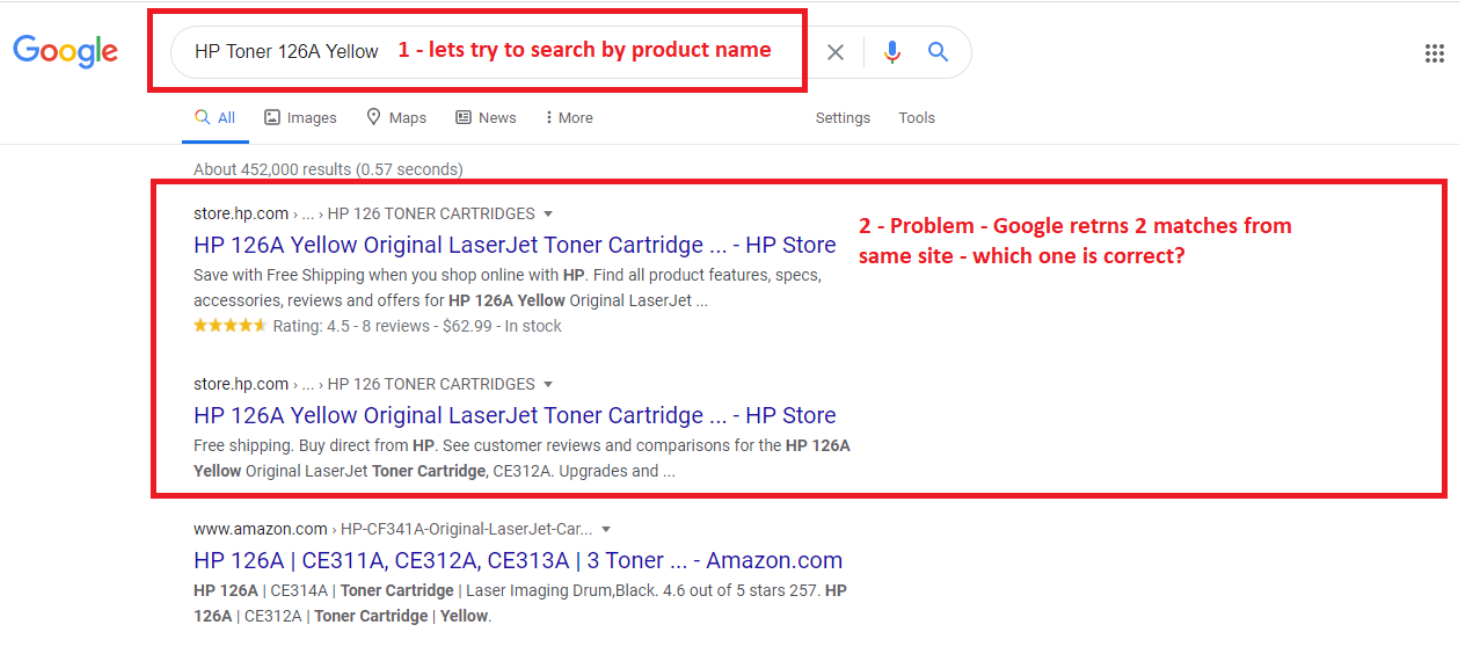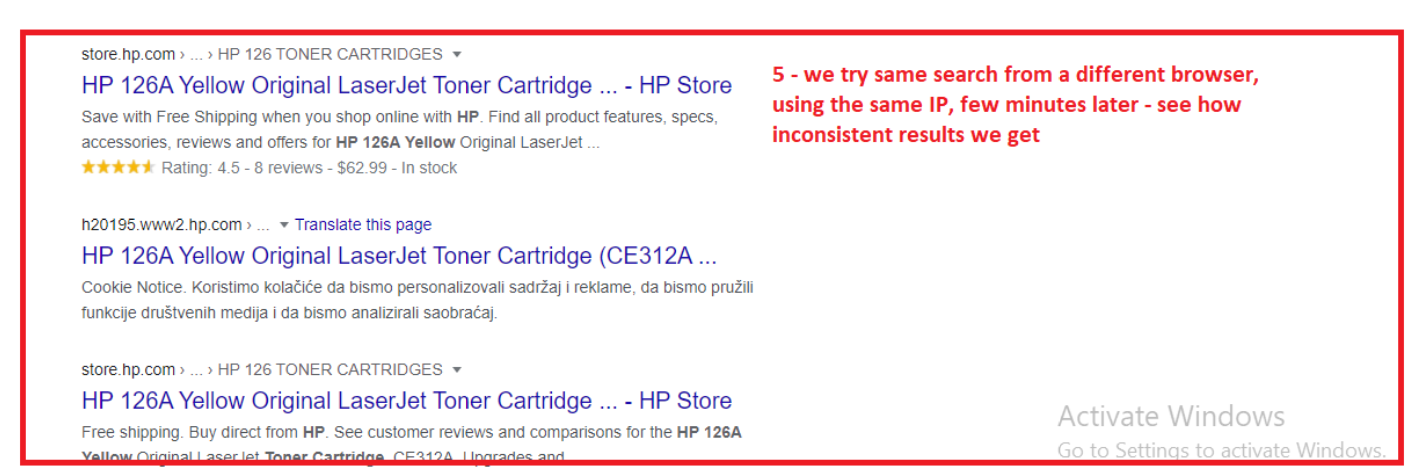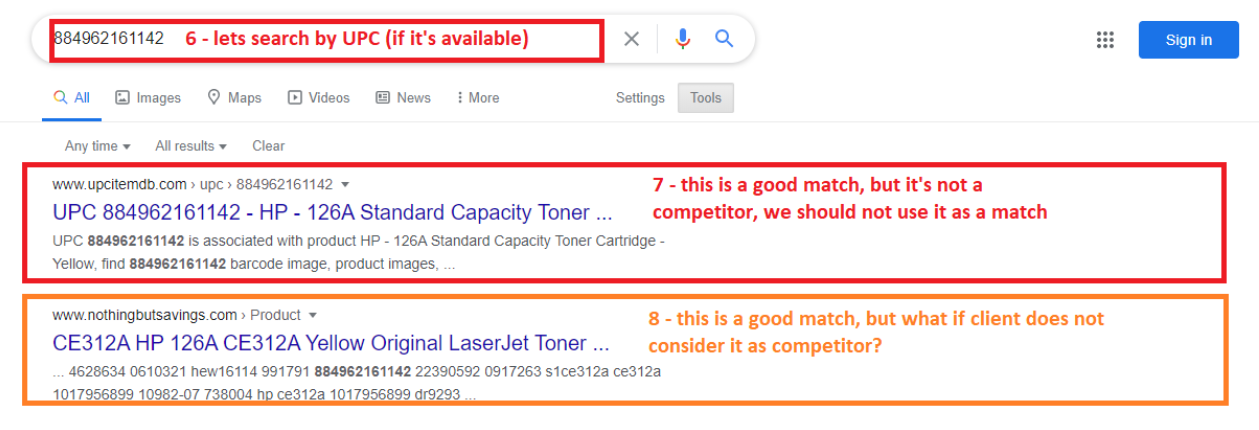Product matching – DO’s (and more importantly: DON’Ts)
With so many apps on the market, price comparison has almost become an everyday activity. However, price comparison wouldn’t be possible without its key piece – product matching.
For quite some time now, we’re witnessing many competitors who are offering very cheap and overly simplistic methods for product matching, bringing results that are of very poor quality.

As price comparison wouldn’t be possible without product matching, the product matching also wouldn’t be of much use if it’s not accurate.
But, with the use of such superficial methods, it is precisely accuracy that has been called into question.
What is product matching? Why is accuracy so important and how to achieve it?
Let’s try to find answers to these questions.
What is product matching?
First things first. We said that product matching is the hidden hero of every eCommerce database. Without it, comparing prices on different websites wouldn’t be possible. How indeed, price comparison engines are able to recognize different offers of products that you’re interested in?
In theory, the answer seems very simple. Matches are made when attributes of a product (e.g. picture, product title, product description) are compared to products that are offered on other websites as well.
In practice, however, this task is harder than it seems. The reason behind this is that many products have different variations. Therefore, they technically may be the same product, but on an SKU level, they are not.

That also means that they need to be priced differently.
Figuring out which products are identical, and which are variations is the main challenge for product matching. Therefore, it’s not surprising that one of the key factors of product matching is accuracy. The first and foremost rule of product matching is to minimize false positives.
The way product matching SHOULD NOT be done
We understand that the easiest and fastest solutions are the most appealing ones, but they won’t bring you the wanted result. Therefore, we can not stress out enough how important it is to avoid using shallow and superficial product matching methods.
Two ways in which product matching SHOULD NOT be done are on Google Search and marketplaces.
Why are we so keen to emphasize this?
Simple because those methods won’t bring you the accurate results! They will only end up in wrong and missed matches.
Due to these overly simplistic matching methods, the system can recognize certain products as a match, when in fact they aren’t.
Let’s use Inkjet toners as an example since, at first glance, this product seems very easy for product matching:
a). We would start by using the product name for Google Search

As you can see, Google shows two matches from the same site, and you find yourself wondering which one is correct?

If you scroll through the page, you’ll find another search result (which we framed in red) that is wrong, even though Google is showing it.
Below that one, there is another result that represents the correct match. But the question is – how to distinguish it from the wrong result above?
Just in case to be sure, we’ve tried the same search only a few minutes later, using a different browser, but with the same IP. The results we got were completely inconsistent.

After seeing this, a very legit question can come to your mind:
b). Why not try with UPC? Maybe the problem was that the search was done by the product name.
However, there are a few problems that come into the picture:
- Not all products have UPC – and even if they do, what if the client is the one who doesn’t have them?
- What if the competitor doesn’t show the UPC on its product pages?
- Even if we disregard these problems and try doing the matching by UPC, the screenshot below shows the results:

One of the results shows a good match, but that’s not a competitor, so we should disregard it and not use it as a match.
The other result is also a good match, but what if a client doesn’t consider it as a competitor?
As you can see, when the product matching is done on Google Search, the result would most probably be incorrect. However, with Price2Spy, product matching is done in a more reliable and yet cost-effective way.
Besides the wrong matches, the other problem that you can face is missed matches.
Missed matches happen exactly when product matching is not done on competitors’ websites. If the price monitoring tool that you are using focuses only on finding the match on Google Search, or on marketplaces, there is a high possibility that the results will show no matches at all.
But, if the system was performing price monitoring directly on the competitors’ website (as Price2Spy does) there would be no room for mistake.
If the results show that there was no match, you can be sure of it. It’s not possible that the system has missed a match if the procedure was done in the right place – competitors’ website.
Why is accuracy so important?
Businesses base their repricing decisions on the data which is provided by the product matching. So, if this step is not performed correctly, it will lead to wrong conclusions which will end up in wrong business decisions.
This will be the result of false positives. A false positive is generated when the algorithm recognizes two products as identical when they aren’t. This is an outcome that every user and business wants to avoid.
The best way to secure the accuracy of product matching
There are many price monitoring tools available on the market, but you need to pay close attention to how they’re conducting the product matching. As we said, if this process is done on Google Search or on marketplaces it can bring misleading results.
Therefore, we in Price2Spy tend to use a much more accurate approach.
Price2Spy’s product matching is done directly on the competitor’s website. We don’t go for the easiest methods (doing the matching on Google or on marketplaces) – unless the client explicitly asks for it.
Why is it so important to do the product matching on the competitor’s site?
Well, there are two reasons. First, when we find a match, it’s accuracy can be fully trusted. Second, when we don’t find a match, that means the competitor does not offer that particular product.
You’ll agree that both points are pretty important, right?
How are matches made?
Price2Spy can provide you two main methods of product matching: manual and automated.
In case of manual matching, all you need to do is provide us a list of products you would like to be added to Price2Spy, followed by a list of your competitors. All the rest will be done by our product matching team.
Another option is automated product matching – automatch.
Automatch is a continual automated product matching process that can be tailored to your needs, and, therefore performed at different intervals (daily, weekly, or monthly).
We highly recommend using it in case your industry uses highly standardized product identifiers like EANs, MPNs, UPCs, or ASINs, and if you need more than 1000 products matched this way.
However, there are clients who express the need for a continual automated process, but their products can not be effectively matched by unique identifiers (no EANs, UPCs, MPNs, etc). In such cases, we recommend using the Hybrid Automatch, which provides matching candidates that need to be approved by a human.
In addition to Hybrid Automatch, we can use a Machine Learning (ML) algorithm that can
go through the products from both yours and competitor sites and make sure that only meaningful matching candidates get suggested.
Product matching via machine learning was an extremely demanding project that took us 18 months to complete. But, it was worth it – no other service (and there are many of them operating worldwide) offers such a feature!
In conclusion
Over time, Price2Spy got even better in performing this sometimes very demanding task. As you can see, the whole point of product matching is to be sure of its accuracy as much as you possibly can.
Not everything is in speed and simplicity – some solutions need to be more complex in order to provide you with the right data. Since you’re about to make crucial business decisions based on this information, it is necessary that you’re sure of its accuracy.
The best way to understand how Price2Spy works is to start a free trial and test out all the services that you think your business might benefit from.
We invite you to try it, and of course, share your impressions with us in the comments below!



